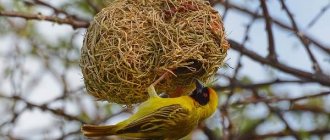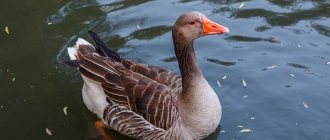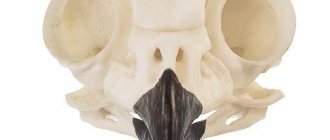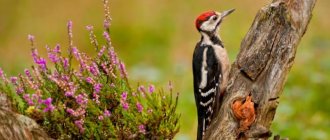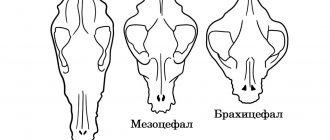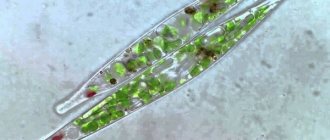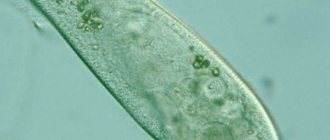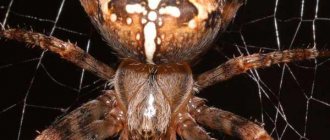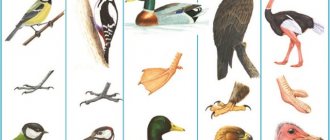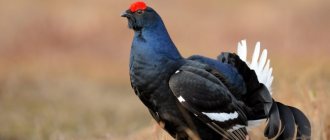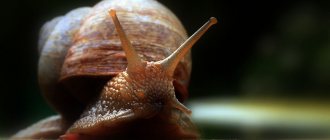Birds are a unique group of homeotheric organisms whose lifestyle is associated with the ability to fly. It is possible under the condition of intense work of the muscles of the sternum and forelimbs - wings. This process, in turn, is ensured by a continuous supply of myocytes with oxygen and nutrients, especially glucose.
Blood is a substance that carries them throughout the body, and its movement depends on the intense activity of the heart - a pump that tirelessly pumps liquid connective tissue. The transfer of oxyhemoglobin and organic substances is carried out by the circulatory system of birds. The heart is the main organ that provides blood circulation. The features of its structure and function will be discussed in this article.
Features of the circulatory system
Intensive metabolism in birds is possible for two reasons. The first is high blood pressure, which causes high blood flow in the arteries and even veins. The second is the specificity of the blood supply to the lungs. The heart of birds has four chambers, the left and right parts do not communicate (there is a complete septum), so the blood does not mix: the arterial flows in the left part, and the venous flows in the right. The metabolism of birds is influenced by such a factor as the passage through the kidneys of not only arterial (as in mammals), but also venous blood through the portal vascular system, therefore, in their liquid metabolites, uric acid is formed instead of urea. Further: the formed elements of blood - red blood cells - in representatives of the Aves class have nuclei, which increases the life expectancy of these cells. The largest arterial vessel, the aorta, emerges from the left ventricle of the heart. It has a right arch, the bifurcation of which leads to the formation of the left and right innominate arteries, which supply the head and wings of birds with nutrients and oxygen.
Avian lymphatic system
The lymphatic system of birds consists of capillaries, the space between the lymphatic vessels, nodes and the lymph itself, a colorless liquid that washes the cells and tissues of the body. Its outflow is prevented by many lymphatic vessels with special pockets with valves.
Lymphatic fluid moves exclusively from the tail to the head of birds, along the spine and on both sides. Lymph nodes are venous and cortical. Veins drain blood from the head, neck, trachea and esophagus. The cortical nodes are located in the lower part of the bird's cervical region. And also near the gonads, aorta, left side of the kidneys, liver, intestines and lungs.
Anatomy of the heart
Being a hollow muscular organ, it is located on the right side of the chest and is covered with the pericardium - the pericardial sac. In front of the sternum, the heart in birds is partially covered by additional respiratory organs - air sacs. It has the shape of a cone, the apex of which occupies an intermediate position between the stomach and liver.
Depending on the biological species of the bird, the shape of the heart can be different: from round-conical to ellipsoidal-elongated. This circulatory organ consists of three membranes: external - serous (epicardium), middle (myocardium) and internal (endocardium). The most important of them is the middle membrane, the structure of which determines the high activity and performance of the heart.
External structure
Features of the external structure of birds:
- Streamlined body shape.
- Division of the body into head, neck, torso, tail and limbs (Fig. 5).
- Transformation of forelimbs into wings.
- Feather cover.
Rice. 5. External structure of the rock pigeon
Veils
Feathers are light, non-wetting horny formations. In the structure of the feather, there is a hollow rod with a base - the edge, and fans located on both sides of the rod (Fig. 6). The barbules of the first and second order are horny plates extending from the shaft, equipped with hooks.
Rice. 6. Bird feather
| Feather classification | |
| Contour | - the main type in the plumage composition. They form the contour of the bird's body, giving it a streamlined shape. |
| Flight feathers (on wings) | - long, durable, designed for flight. They form the plane of the wing and are attached along its edge. Primary ones are attached to the hand, secondary ones are attached to the forearm, tertiary ones are attached to the shoulder. |
| Coverts | - a variant of contour feathers. Cover the lower part of the flight feathers. |
| Helmsmen | - make up the tail. Strong and long feathers regulate the direction of flight. |
| Downy | - intermediate between down and contour feathers. They are located under the contour feathers, have a thin shaft, and the barbs do not contain hooks. |
| Pooh | - feathers with a very shortened, thin shaft. The beards extend from the edge in a tuft. |
Musculoskeletal system
Rice. 7. Skeleton of the rock pigeon: 1 - lower jaw; 2 - upper jaw; 3 - cerebral part of the skull; 4 - cervical spine; 5 - shoulder; 6 - forearm; 7 — buckle; 8 - phalanges of fingers; 9 - shoulder blade; 10 - ribs; 11 - complex sacrum; 12 - caudal spine; 13 - coccygeal bone; 14 - thigh; 15 - lower leg; 16 — shank; 17 - phalanges of fingers; 18 - sternum; 19 - keel of the sternum; 20 - coracoid; 21 - clavicles (fork)
Table 2.
Bird skeletal structure
| Skeleton department | Bones in the skeleton | Peculiarities |
| Scull | Skull, jaws | Large eye sockets. Jaws have no teeth |
| Spine | Vertebrae departments: cervical, thoracic, waist, sacral and caudal | Only the vertebrae of the cervical and caudal regions are mobile |
| Rib cage | Ribs, sternum | On the chest there is a growth (ridge) - a keel, to which the wing muscles are attached. The ribs have transverse processes |
| Forelimb belt | Clavicles, shoulder blades, crow bones. Free limb: humerus, forearm bones, hand bones | The collarbones grow together to form a fork. Almost all the bones of the hand have fused and formed a buckle |
| Hind limb belt | Pelvic bones. Free limb: femur, shin bones, tarsus, foot bones. | The pelvic bones fuse with the sacrum. The tarsus is formed by the bones of the leg and foot |
Myocardium
It is formed by striated muscle tissue of a special structure, which distinguishes the heart in birds from all other internal organs containing only smooth muscles. The internal arrangement of cardiomyocytes provides strength and evenly distributes the load during their contraction. Another important feature of the heart muscle is the independence of systole and diastole of the chambers: atria and ventricles. Myocardial cells are intertwined with each other, so nerve impulses radiate through the cardiomyocytes at lightning speed, and the entire membrane instantly contracts.
Nervous system, vision, hearing and reproductive system of birds
The frontal hemisphere of the brain and the enlarged cerebellum are responsible for the rapid reaction and acquisition of conditioned reflexes in birds. The sense organs of birds are eyes and ears. They see well in the distance and distinguish colors.
Bird hearing is so sensitive (for example, in owls) that it is able to detect the slightest sounds made by other animals.
Males have a pair of testes. The females' bodies have one egg at conception and the pelvis would not be able to pass two eggs at the same time. The sperm matures and passes through the vas deferens into the cloaca, after which it is injected into the female. Fertilization occurs at the beginning of the oviduct. While the egg moves through the cloaca, it becomes overgrown with yolk, white and shell. Usually this process does not exceed a day.
If you liked the article, share it with your friends and like it. In the comments you can discuss any questions that arise while reading.
Chambers of the heart
The two atria - left and right, as well as the two ventricles have several features related to the anatomy of the myocardium. Its wall is much stronger and thicker in the left half of the heart, since from its ventricle arterial blood is released into the aorta under high pressure and then enters the systemic circulation. In the heart, blood always moves in one direction: from the atria to the ventricles and then from the right to the pulmonary arteries, and from the left to the right aortic arch. At the border between the chambers there are atrioventral valves, consisting of connective tissue: muscular and membranous. They do not allow a portion of blood to return from the ventricle to the atrium. The heart of a bird, the structure of its chambers and valves depends on which systematic group it belongs to.
In new palatines (true birds), the anterior left and right, as well as the posterior veins flow into the right atrium independently, and in ancient palatines the vena cava merge to form a sinus. Two muscular valves are formed between it and the right atrium. The first group includes birds of the family Pigeonidae, Anseriformes, Passeriformes, Woodpeckers, etc. The second group consists of Cassowaries, Kiwiformes, Rheaformes, also called keelless birds (flightless).
Signs
Feather cover and the ability to fly are the main characteristics of birds. These are warm-blooded animals that can maintain a constant body temperature of 40°C. The skin is dry, devoid of glands (except for the coccygeal gland in waterfowl). The presence of a beak is a distinctive feature of birds. Feathers, scales on the legs, claws and beak covers - horny formations, skin appendages (Fig. 2).
Adaptations of birds for flight:
- The body is streamlined to reduce friction.
- Strongly developed pectoral muscles set the wings in motion.
- The feather cover creates a flying surface.
- The skeleton is strong and light (tubular bones are hollow).
- The forelimbs are transformed into wings.
- The lantern helps with landing.
- The tail is the rudder in flight.
- The jaws are devoid of teeth.
Rice. 2. Signs of birds
Birds have distinctive features in the structure of their respiratory and digestive organs, which are associated with the ability to fly. The beaks of insectivorous birds are thin, sharp, while those of granivorous birds are strong, cone-shaped. Large sizes and a strong beak, often curved down, distinguish daytime and nocturnal birds of prey.
In temperate latitudes, the dependence of bird life on seasonal changes in nature is more pronounced. There is a period of preparation for reproduction, which in most birds is associated with the construction of a nest or nesting. After hatching, post-breeding molt occurs. The final periods in the annual cycle are preparation for winter and wintering. As the seasons of the year and food resources change, birds migrate (Scheme 1).
Scheme 1.
Groups of birds according to the nature of their migrations during the season
Migratory birds migrate thousands and tens of thousands of kilometers from their nesting sites in the fall. Flights to warmer regions take place along the same routes. Scientists study the migration directions of birds using ringing: they attach a light metal ring to the bird’s tarsus indicating the number, city and country.
Circulation circles
As we have already mentioned, birds have a four-chambered heart. Its structure determines two circles of blood circulation. The pulmonary circle begins in the right ventricle and ends in the left atrium. The great circle originates in the left ventricle. From the right arch of the aorta, the arteries branch and bring oxygen and nutrients to the cells of all organs and tissues of the bird. Venous blood collects in the vena cava, which enters the right atrium, ending the systemic circulation.
Skeleton, respiration, digestion and excretory system
The bird's skeleton is designed to be as comfortable as possible for birds. It creates reliable conditions for flying in the sky. For example, the bones are light in weight, and the tail and neck are a series of dense muscles.
A special feature of the respiratory system of birds is special air sacs. When you inhale, the exhaust air goes into the anterior sacs. From the rear comes a new portion of fresh food with nutrients.
The lungs are like a sponge. In a sitting position, birds exhale air due to muscle contraction; in flight, due to the flapping of their wings and a special fork.
The digestive tract in birds is completed within an hour. The beak secretes salivary glands for swallowing. In front of the esophagus there is a crop in which eaten food accumulates. Birds have two stomachs. The first ventricle is needed for fermentation, the second for grinding food.
Due to the absence of a rectum, food comes out quickly, reducing weight. The main excretory secretion is uric acid. After processing, it comes out directly through the skin; birds do not have a bladder.
Specifics of cardiac activity
Studying the main part of the circulatory system - the heart of a bird, the structure and functions of its chambers - we note that this organ has a fairly large size and mass relative to the weight of the body itself. For example, in birds such as bullfinches, crows, and ducks, it is about 1 - 1.3% of body weight, and in species with high flight speed and maneuverability - up to 2%.
For example, in birds of prey - white-tailed eagle, falcon - the cardiac index is about 1.8%. In addition, birds have high blood pressure, and the pulse rate ranges from 200 to 600 beats per minute, and during flight reaches 1200 heartbeats.
In this work, we answered the question of what kind of heart birds have by studying the features of the myocardium and characterizing the specifics of their cardiovascular activity.
Bird class
- Integument, musculoskeletal system
- Digestive system
- Respiratory system
- Circulatory system
- Excretory system
- Nervous system
- Reproductive system
The body is covered with feathers and has a streamlined, aerodynamic shape. It is divided into head, neck, body and tail. The forelimbs are in the form of wings, the hind limbs are legs with 4 fingers.
The beak, including the mandible and mandible, is clearly visible on the head. In birds of prey, the beak takes on a pointed shape in order to tear off flesh.
Dry skin is almost completely devoid of glands. The only gland, the coccygeal gland, is located above the caudal vertebrae. The secretion of the coccygeal gland is oily in nature and is used by the bird to lubricate the wings, preventing them from getting wet. This gland is especially well developed in waterfowl: they lubricate the dense feather cover with its secretion.
The skeleton of birds is represented by the vertebral column, which (like reptiles) includes 5 sections: cervical, thoracic, lumbar, sacral and caudal. The cervical region is distinguished by exceptional mobility: for example, owls can turn their heads up to 270°, which perfectly allows them to track prey.
Features of the skeleton are the presence of a keel - a bony outgrowth of the sternum, to which the well-developed pectoral muscles involved in flight are attached. Many parts of the skeleton in birds fuse (their number decreases), due to which the total mass of the bird decreases: the thoracic vertebrae merge into the dorsal bone, and the caudal vertebrae into a complex sacrum. The paired bones of the pelvic girdle also fuse.
The girdle of the forelimbs (shoulder) is formed by three paired bones: the crow bones (coracoids), the clavicles and the scapulae. The fused ends of the clavicles form a fork, which absorbs shocks during wing flapping.
The pelvic (posterior) girdle of birds is formed by the pubic, ischial, and ilium bones fused to each other on each side. It is important to note: the pubic bones do not fuse together, which makes the bird’s pelvis “open” and allows large eggs to be laid.
As birds adapt to flight, many bones become hollow inside. They can be thought of as a hollow cylinder filled with air, which reduces the overall weight of the bird.
The skeleton of the free forelimb (wing) consists of the humerus (shoulder), the radius and ulna (together they form the forearm) and the hand (wrist, metacarpus, consisting of one bone - the buckle, the phalanges of the fingers). The hind limb is formed by the femur (thigh), fibula and tibia (fused with each other to form the lower leg) and feet (tarsus, phalanges).
We especially note that the foot consists of two sections - the tarsus is absent, as it fuses with the tibia and metatarsus. As a result of this fusion, a long bone is formed - the tarsus, which serves as a shock absorber when the bird lands, and also helps to push off the ground during take-off and stay on the branch.
The most developed muscles in birds are the pectoral muscles - the lowering wings, which overcome great resistance, helping to keep the bird in the air. The subclavian muscles involved in raising the wings are also well developed. In general, the muscular system of birds is more complex and differentiated compared to the muscular system of their ancestors.
To obtain food and capture it, the bird uses a beak - an organ formed by elongated toothless jaws, covered with a horny sheath with a cutting edge. Birds have no teeth, but there are a variety of beak shapes, reflecting the food specialization of birds.
You already know that a hook curved at the end of the beak is characteristic of birds of prey: it helps to hold the prey and tear the prey into pieces. Birds that feed on seeds (passerines) have a small, strong beak equipped with cutting edges that allow them to crack seed shells. Elongated beaks are characteristic of birds that hunt in water - herons, feeding on nectar - hummingbirds.
Anseriform waterfowl (geese, swans, ducks) are characterized by the presence of a flat beak, along the edge of which there are horny plates - a filtering apparatus.
The digestive tract begins with the oral cavity, in which the tongue is located. The ducts of the salivary glands also open here. The oral cavity passes into the pharynx, which continues into the esophagus, along which there is an extension - the goiter. The crop is designed to store and soften food.
Next is the stomach, consisting of two sections: glandular and muscular. Enzymatic (chemical) processing of food occurs in the glandular section. The muscular section is lined from the inside with a dense horny covering, which mechanically processes food, grinding it.
The stomach continues into the small intestine, which immediately opens into the cloaca. Thus, “flight” left its mark on this system: the digestive tube of birds is shortened in order to break down food faster and more efficiently. It should be noted that flight requires a large amount of energy.
It consists of nostrils leading into the nasal cavity, which passes into the oral cavity, and then into the trachea. The trachea is divided into two bronchi, each of which enters the corresponding lung and splits into bronchi of smaller caliber.
The lungs of birds differ from the lungs of amphibians and reptiles - they have a spongy structure, their respiratory surface is much larger. In addition, the type of breathing of birds differs from other land animals - they are characterized by double breathing, which is made possible by air sacs.
Air sacs are outgrowths of the walls of the bronchi, which are thin-walled cavities filled with air. The meaning of double breathing in birds is that gas exchange in the lungs occurs both during inhalation and exhalation.
How is it possible for gas exchange to occur during exhalation? - you ask. In fact, everything is simple: during exhalation, air leaves the rear air sacs, and, entering the lungs, gives oxygen to the blood, and is saturated with carbon dioxide. All this for the sake of flight - an extremely complex motor act, during which tissues and organs require a lot of oxygen.
The circulatory system of birds is of a closed type. The heart, with a complete septum in the ventricle, consists of 4 chambers: two ventricles and two atria. The left side of the heart has arterial blood, the right side has venous blood. The two circles of blood circulation (large and small) are completely separated from each other.
The isolation of the two circles of blood circulation brings the level of metabolism to the highest level: birds become warm-blooded (unlike their ancestors - cold-blooded reptiles). The body temperature of birds no longer depends on the environment, which gives them great advantages and allows them to populate cold climate zones.
Flight is an extremely energy-consuming pleasure for the circulatory system: during flight, the heart of birds develops a beat rate of up to 1000 per minute or more to ensure blood circulation adequate to the needs of the body.
The excretory organs of birds are paired pelvic kidneys (metanephros, secondary kidney), from which the ureters begin, opening into the cloaca. There is no bladder: urine is not retained in the body, which reduces the overall weight of the bird. Due to the absence of a bladder, birds are characterized by frequent emptying of the cloaca.
Like all chordates, the nervous system of birds is of the tubular type. Comparing the brain of a bird and a reptile, it can be noted that in birds the relative size of the brain increases: the mass increases to 5-8% of body weight.
This increase occurs due to the development of the cerebral hemispheres of the forebrain, which are responsible for behavioral reactions. Thanks to this, birds exhibit complex behavior and express concern for their offspring.
Birds have a well-developed cerebellum, which is responsible for coordination of movements, which is very important for flight. The cerebellum of birds is huge and folded.
The olfactory lobes are poorly developed: in birds, the greater role is played not by the organs of smell, but by the organs of vision. The optic lobes are characteristic formations of the midbrain, which are swellings of the roof of this section. These lobes are well developed; birds have exceptional vision: for example, an eagle can notice a mouse in a field at a distance of 1-2 km.
Birds are practically devoid of smell, so the organ of vision takes on the main function. The bird's eye sees more sharply than the human eye, and the eyes are anatomically located on the sides of the head: this localization provides a larger viewing angle.
The structure of a bird's eye is amazing! Its special feature is its extremely mobile lens. Double accommodation in birds is the ability of the lens not only to move back and forth, but also to change its curvature, which provides excellent adjustment for the best vision. Even the cornea of a bird's eye is capable of changing its curvature to some extent.
The hearing organ is well developed and includes the inner and middle ear. The developed organ of hearing complements the ability of birds to make sounds: this is how they exchange important information with each other. The vocal cords, the organ of voice production, are located in the lower larynx (singing larynx).
Birds are dioecious animals. The male gonads are represented by paired testes, from which the vas deferens begin. In pigeons, before entering the cloaca, the vas deferens form an extension - seminal vesicles. There are no special copulatory organs.
The female reproductive system is represented by a single ovary (the second is reduced to lighten the weight) and oviducts extending from them, which open into the cloaca.
Fertilization is internal - occurs inside the mother's body, in the oviduct.
All birds are characterized by a special organ - the bursa of Fabricius, which opens through a duct into the lower part of the cloaca from the back. The bursa of Fabricius, like the thymus, is an organ of immune defense in birds.
What functions does the heart have?
Performing a pumping function in the circulatory system, the heart constantly pumps blood into the arteries. The human heart is a kind of pump that ensures constant and continuous movement of blood through the vessels in the right direction.
Interesting materials:
How to correctly write the reason for dismissal? How to group data in Excel? How are we hanging out in November 2022? How and with what to eat Chia seeds? How to play against each other in CS GO? How to play VX with bots? How to import XMP into Lightroom? How to import bookmarks from Google Chrome to Yandex? How to import bookmarks to Yandex? How to initiate bankruptcy of a legal entity?
Composition of mammalian blood
The blood of mammals consists of liquid plasma, which contains a full set of so-called formed elements:
- Red blood cells are carriers of the iron-containing substance hemoglobin, they carry oxygen;
- Platelets are bodies responsible for blood clotting and serotonin metabolism;
- Leukocytes are white bodies responsible for immunity.
Red blood cells and platelets of mammals, unlike other groups of animals, do not contain nuclei.
Platelets are actually “blood platelets”; the absence of nuclei in red blood cells is explained by the need to accommodate a larger amount of hemoglobin.
Also, red blood cells do not have mitochondria, so they synthesize ATP without the use of oxygen, making them the most effective carriers of it.
Animal Heart (Part 1)
The mammalian circulatory system is the highest form of blood circulation.
Like birds, it is characterized by a four-chambered heart and two circles - large and small.
This form promotes accelerated metabolism compared to other groups of vertebrates: in fact, we have “two hearts” installed in different parts of the vascular system.
The blood in both halves of the heart does not mix.
The importance of birds in nature and human life
Many birds eat insects and mouse-like rodents - pests of agriculture and forestry, carriers of dangerous pathogens of plants, animals and humans. Birds provide benefits by helping to pollinate flowers. Birds eat fruits and seeds and regulate plant numbers. The birds themselves are food for other animals (reptiles, mammals).
Some bird species are objects of commercial and sport hunting. These are representatives of the order Galliformes (pheasant, black grouse, hazel grouse), birds of ponds and marshy places (duck, goose, corncrake, grebes, snipe).
Scheme 2.
The importance of birds in nature and human life
Game and domestic birds are a source of meat, eggs, feathers and down for humans. Bird droppings are used as organic fertilizer. Poultry (chickens, geese, ducks, turkeys) are bred for their tasty dietary meat, eggs, and fluff. Breeds of chickens characterized by increased egg production have been selected. Quails, guinea fowl, and ostriches are grown at home and bred on industrial farms.

